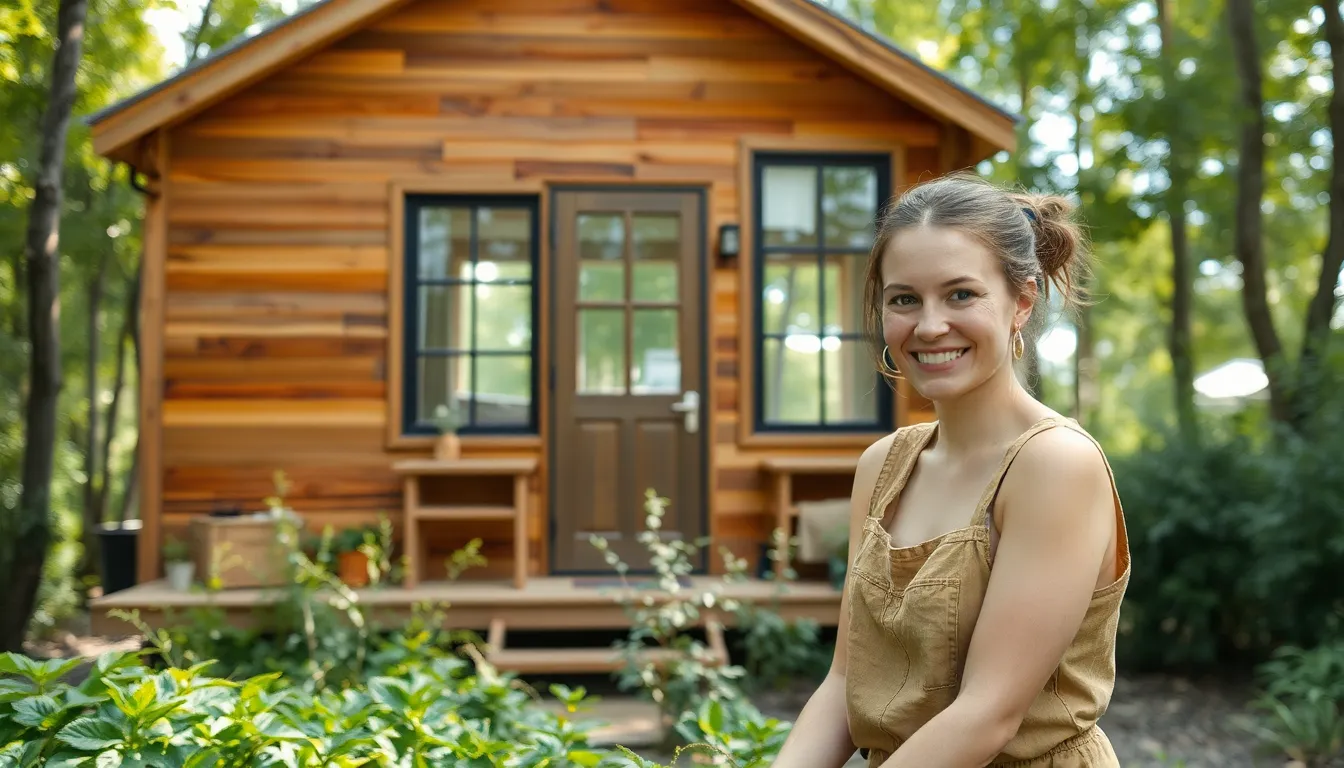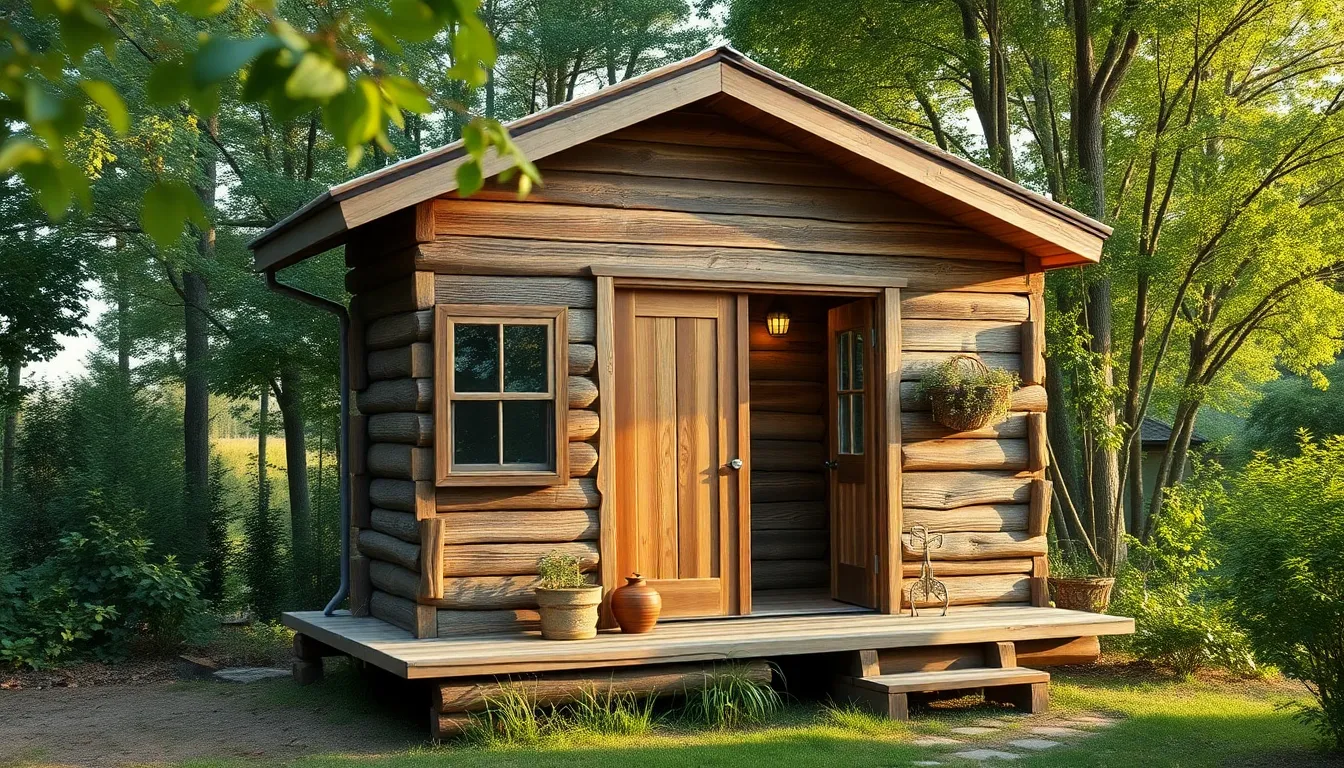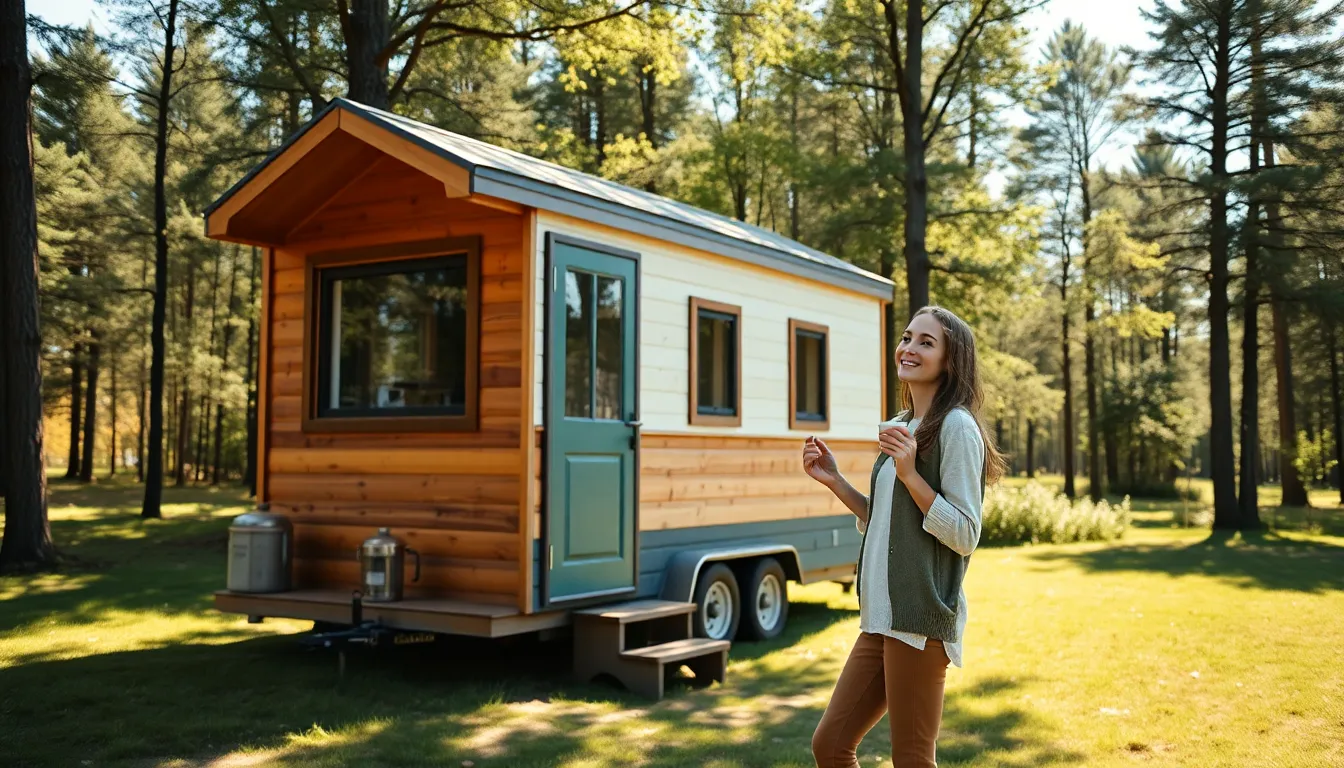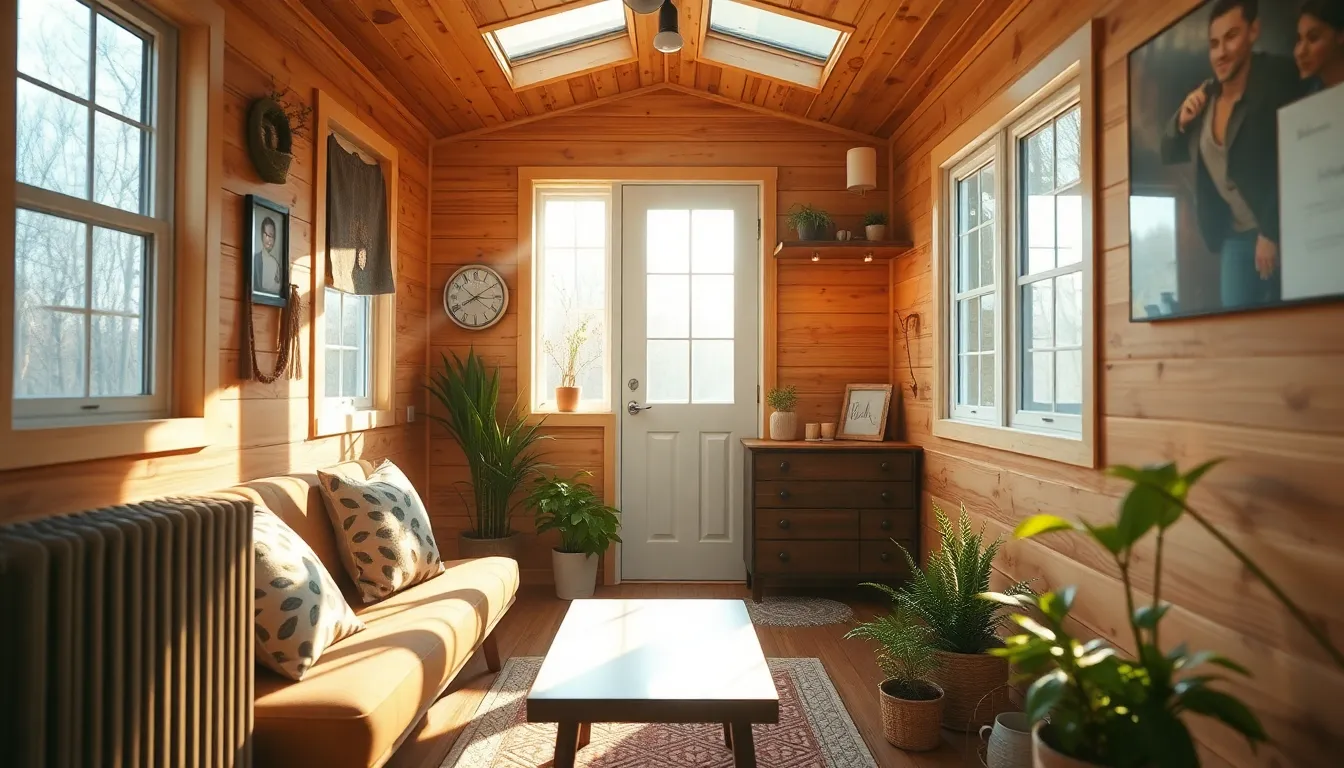Imagine living in a cozy tiny home crafted from reclaimed wood—where every beam tells a story and Mother Nature gives a nod of approval. This sustainable trend isn’t just about downsizing; it’s about embracing a lifestyle that’s eco-friendly and stylish. Who knew saving the planet could feel so chic?
Reclaimed wood tiny homes are popping up everywhere, and for good reason. They offer a unique charm that cookie-cutter houses just can’t match. Plus, they come with a built-in conversation starter: “Oh, this old beam? It was part of a barn from 1920!” Who wouldn’t want to impress their friends with that? So, if you’re ready to swap square footage for character and sustainability, a reclaimed wood tiny home might just be your perfect match.
Table of Contents
ToggleOverview Of Reclaimed Wood Tiny Homes
Reclaimed wood tiny homes combine sustainability with aesthetics. These homes utilize salvaged timber from old structures, bringing a history that new materials lack. Unique character defines each reclaimed wood home, showcasing distinct grains and colors that tell stories of their previous life. Craftsmanship stands out in these homes, as builders often emphasize artisanal techniques to highlight the wood’s natural beauty.
Energy efficiency frequently characterizes reclaimed wood tiny homes. Owners benefit from reducing their environmental footprint while still achieving a stylish and modern living space. Many designs prioritize insulation and renewable energy sources, enhancing overall comfort and sustainability.
Flexibility in design options also makes reclaimed wood tiny homes appealing. Various layouts can accommodate specific needs, whether it’s a single living space or multi-room configurations. The adaptability of reclaimed wood allows for creative architectural solutions, inviting customization.
Affordability often plays a role in the decision to choose reclaimed wood. While initial costs can vary, long-term savings arise from energy efficiency and reduced maintenance needs. Homeowners find that investing in quality reclaimed materials pays off through durability and low upkeep.
Communities increasingly recognize the value of these homes, promoting eco-friendly living. Regulations in many regions support tiny home movements, offering resources for those interested in downsizing. As trends emphasize minimalism, reclaimed wood tiny homes position themselves at the forefront of innovative living solutions.
Benefits Of Reclaimed Wood
Reclaimed wood offers numerous advantages, making it an ideal choice for tiny homes. Its contributions span environmental benefits to aesthetic appeal.
Sustainability And Environmental Impact
Sustainability stands as a primary benefit of reclaimed wood. Using salvaged timber reduces the need for new lumber, thereby conserving forests. It lowers carbon emissions, contributing to a smaller ecological footprint. Additionally, reclaimed wood often comes from sources like old barns and factories, which can help preserve historical materials. This recycling process minimizes waste, preventing valuable resources from entering landfills. As communities increasingly embrace eco-friendly living, reclaimed wood serves as a prominent alternative that supports sustainable architecture.
Unique Aesthetic Appeal
Unique aesthetic appeal characterizes reclaimed wood. Each piece tells a story through its distinct grains, colors, and textures, setting it apart from conventional materials. Homeowners often appreciate the rustic charm that reclaimed wood brings to tiny homes. It enhances the visual interest of spaces while maintaining a warm and inviting atmosphere. Diverse origins of the wood create a palette that complements various design styles, from modern to traditional. This individuality adds character and depth, making reclaimed wood a favored option among designers and homeowners alike.
Key Features Of Reclaimed Wood Tiny Homes
Reclaimed wood tiny homes feature several distinct characteristics that contribute to their charm and efficiency. These homes offer unique design flexibility and exceptional durability, making them suitable for a variety of lifestyles.
Design Flexibility
Design flexibility stands out as a major asset of reclaimed wood tiny homes. Homeowners can customize layouts to fit individual needs, creating functional spaces that maximize efficiency. Unique textures and colors of reclaimed wood enable creative aesthetics, appealing to diverse tastes and styles. Builders explore various architectural designs, accommodating everything from minimalist charms to rustic elegance. The adaptability of reclaimed wood allows for incorporation within various themes, enhancing overall visual appeal without compromising structural integrity.
Durability And Strength
Durability and strength make reclaimed wood an appealing choice for tiny homes. Salvaged timber often demonstrates impressive resilience due to its dense, aged characteristics. Mature wood tends to withstand environmental stresses better than new lumber, providing long-lasting foundations for homes. Reclaimed materials typically undergo meticulous inspection, ensuring structural stability in various climate conditions. This focus on quality leads to reduced maintenance needs, allowing homeowners to enjoy their living spaces without constant repairs. The combination of durability and timeless beauty satisfies both practicality and aesthetic sensibilities.
Popular Styles And Designs
Reclaimed wood tiny homes offer various appealing styles and designs. They successfully blend aesthetics with sustainability, creating perfect living spaces for many.
Minimalist Approach
Minimalism resonates deeply in reclaimed wood tiny homes. Simple lines and functional layouts characterize this style, emphasizing efficient use of space. These homes often feature open floor plans, allowing for an airy atmosphere. Natural light plays a key role, enhancing warmth and comfort. Essential furnishings provide practicality without cluttering, creating an inviting environment. Selecting reclaimed wood as a focal point accentuates simplicity while introducing unique textures. Homeowners appreciate the lack of excess, finding joy in a clean, purposeful design that highlights craftsmanship.
Rustic Charm
Rustic charm defines another popular design among reclaimed wood tiny homes. Unique grains and weathered finishes evoke a sense of history and connection to nature. Soft, earthy tones create a warm and cozy ambiance reminiscent of traditional cabins. Elements like exposed beams, barn doors, and handcrafted details enhance the overall aesthetic. Additionally, incorporating natural materials, such as stone and metal, complements the wood’s rustic feel. Homeowners enjoy a comfortable, inviting environment that balances tradition with modern functionality. This style not only celebrates the past but also promotes sustainable living, aligning perfectly with the principles of the tiny home movement.
Cost Considerations
Investing in a reclaimed wood tiny home involves various financial aspects. Initial costs often include purchasing salvaged timber, which varies based on quality and source. Salvaged wood, though sometimes pricier, offers long-term savings through lower maintenance and higher durability.
Building costs also depend on design complexity. Simple layouts require fewer materials and labor, keeping expenses down. Custom features, such as built-in furniture or specialized finishes, can increase costs significantly.
It’s essential to consider energy efficiency in a tiny home. Many reclaimed wood tiny homes incorporate insulation materials, leading to reduced utility bills. Energy-efficient appliances and systems further enhance savings over time.
Financing options differ for tiny homes. Some banks and credit unions provide specific loans for these types of properties, while others treat them as recreational vehicles. Exploring local regulations is crucial, as zoning laws can impact property value.
Budgeting for potential land costs is necessary. Renting space in tiny home communities or purchasing land can involve different financial commitments. Utilities such as water and electricity will also influence monthly operating costs.
Insurance premiums for reclaimed wood tiny homes fluctuate. Insurers may consider the age and condition of materials, affecting overall coverage costs. Homeowners should shop around for the best rates.
Long-term benefits and lower environmental impact add value to these homes. Sustainable living appeals to many buyers, raising property demand. Resale values may increase as interest in eco-friendly designs grows.
Conclusion
Embracing a reclaimed wood tiny home is more than just a housing choice; it’s a lifestyle that prioritizes sustainability and individuality. These homes offer a unique blend of charm and eco-friendliness that resonates with those seeking a simpler way of living. The character of reclaimed wood not only enhances the aesthetic appeal but also tells a story that connects homeowners to their environment.
As the tiny home movement gains momentum, opting for reclaimed materials reflects a commitment to reducing waste and conserving natural resources. With their durability and design flexibility, reclaimed wood tiny homes stand out as a viable option for anyone looking to downsize while enjoying modern comforts. Ultimately, this choice represents a step towards a more sustainable future, making it an attractive option for conscious living.









